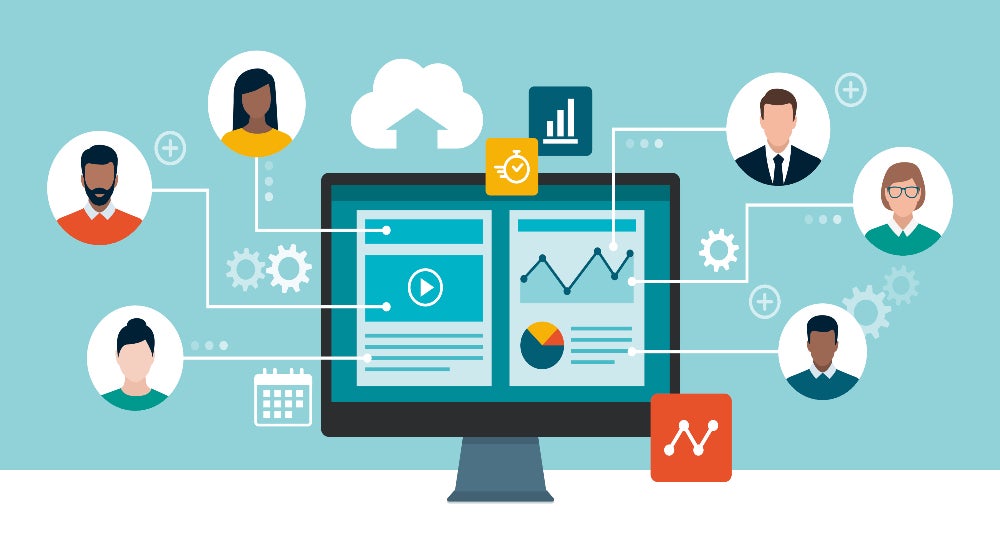The age of continually shifting workplace environments has created challenges for effective employee management. Remote work is reliant on a strong technology foundation that can support workflow processes, communication, and collaboration.
Whether you’re supporting an in-person, remote, or hybrid workforce, having the right technology solutions is key to creating agile organizations.
Let’s look at what it takes to succeed with Agile HR.
What is Agile HR?
More organizations are adopting an agile HR strategy in response to rapid changes. The term “agile” originates from software development methodologies prioritizing flexibility and speed. More recently, it has been applied to HR to help organizations move faster to meet employee needs. Agile HR emphasizes a collaborative approach with a focus on employee empowerment and continuous learning and development. It enables HR professionals to respond quickly to changing workforce needs, optimize processes, and promote a culture of innovation and experimentation.
Becoming an Agile HR Team
There’s no doubt that the business world as we know it has been reimagined over the past three years. With over 50% of organizations now employing hybrid and remote workers, agile solutions that align functions across HR and IT are a must for continued success.
In addition to managing employees wherever they are, organizations need to help employees manage where they’re going professionally. The corporate ladder model has been abandoned for more demand-responsive, skills-based movement and promotion. This means more HR time dedicated to training and upskilling.
Excellent workforce management in a highly digital workplace requires a balance between HR and IT teams. This can often be a stumbling block due to isolated processes and disparate technologies.
Challenges With HR Processes
Delivering seamless workforce experiences is easier said than done. Organizations need tools and processes that can connect and orchestrate remote distributed teams and fragmented technologies to support heightened levels of responsiveness.
Some of the biggest challenges faced by HR teams include:
- Lack of flexibility in traditional HR and IT systems when requirements change rapidly
- Countless applications may need integration for a high-performance digital workplace
- Manual processes for moving data across disconnected systems that negatively impact employee satisfaction and performance
Adopting an agile approach to HR can resolve these challenges and open up even more opportunities for your employees.
4 Key Steps For Agile HR
Workforce journeys for both remote and on-premises employees follow four key steps that leverage data and optimize processes for HR, managers, employees, and IT:
- Transform HR application and data integration
- Improve HR data quality and institute governance
- Create a 360-degree view of employees
- Automate processes and deliver experiences without retooling existing systems
Automate, Streamline, and Orchestrate
Boomi can help you respond to rapidly changing conditions. With our intelligent integration and automation platform, HR teams can harness an agile approach and streamline the full employee lifecycle, including:
- Automating employee onboarding and engagement experiences across platforms
- Streamlined and integrated internal procurement processes to unify HR and finance
- Building streamlined employee experiences that attract high-quality technical candidates and improve retention
- Providing employees with a centralized benefits, time, and compensation dashboard with integration.
Agile HR Solutions Lead To Success
Customers are reaping the rewards of workforce agility and HR process automation with Boomi. Biotech leader Moderna improved their HR onboarding experience for contractors and new hires by working with Boomi to increase agility in their HR functions.
Boomi was already the integration solution of choice for Moderna. Moderna eliminated hundreds of hours of manual work by expanding their use of Boomi to enable connections between ServiceNow and critical applications used in the HR onboarding process.


 English
English 日本語
日本語
![[Boomi Infographic] Becoming an Agile HR Team](https://boomi.com/wp-content/uploads/5f49422b8fed3a4fc06ea5bf_Infographic-Becoming-an-Agile-HR-Team-1-scaled.jpg)